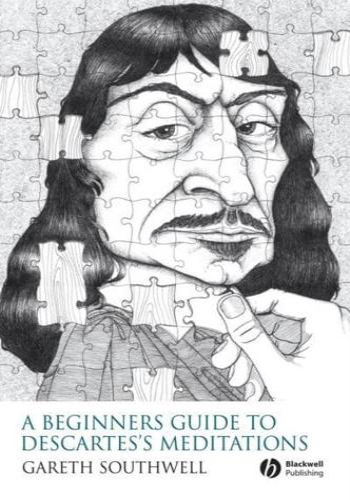A Beginner's Guide to Descartes's Meditations is a comprehensive guide to understanding one of the most important works in the history of philosophy. It breaks down each chapter of Rene Descartes's Meditations on First Philosophy and provides clear explanations, real-life examples, and insights to help readers grasp the complex ideas presented in the text. In this summary, we will go through each chapter of the book, highlighting the main points and discussing how they can be applied to real-life situations.
Chapter One: The Meditations and the Method of Doubt
In chapter one, the author provides an overview of the Meditations and introduces the method of doubt that Descartes uses to arrive at his famous proposition, "I think, therefore I am." The author explains that Descartes believes that many of our beliefs are based on faulty foundations and that we must doubt everything in order to find a truly indubitable belief. To illustrate this point, the author uses the example of a person who believes that they are awake and not dreaming. However, upon waking up from a vivid dream, the person realizes that their belief of being awake was false. This example shows how easily our beliefs can be called into question and how Descartes's method of doubt is necessary to discover true knowledge.
Chapter Two: The First Meditation
In the second chapter, the author delves into the first meditation of Descartes's work. In this meditation, Descartes doubts everything, including the world, his senses, and even his own existence. The author explains that Descartes does this in order to free his mind of any preconceived notions and to start from a blank slate. A real-life example of this can be seen in the scientific method, where scientists must question and doubt existing theories and information in order to make new discoveries and advancements.
Chapter Three: The Second Meditation
Chapter three focuses on the second meditation, where Descartes uses the "Cogito" argument to arrive at his conclusion of "I think, therefore I am." The author explains that Descartes's doubt leads to the realization that even if everything else were to be false, the fact that he is doubting is proof of his existence as a thinking being. This notion of "I think, therefore I am" has been applied in different ways in various fields such as psychology, where it is argued that the ability to think and reason is what sets humans apart from other animals.
Chapter Four: The Third Meditation
In the third meditation, Descartes introduces the idea of God and the existence of a perfect being. The author explains that Descartes believes that the idea of a perfect being must have come from somewhere, and that source could not have been himself. Therefore, he concludes that God must exist and that he is the guarantor of the reliability of our senses and reasoning. This concept of a perfect being has been applied in morality, where the existence of a perfect being serves as the basis for moral principles and ethics.
Chapter Five: The Fourth Meditation
In chapter five, the author discusses the fourth meditation, where Descartes posits the existence of an external world. The author explains that Descartes uses the concept of a perfect being to argue that God would not deceive us into believing in an external world that does not exist. This logic can be applied to trust in our everyday lives. We must trust that the information presented to us by our senses is reliable, or else we would live in a constant state of doubt and uncertainty.
Chapter Six: The Fifth Meditation
Chapter six focuses on the fifth meditation where Descartes uses the concept of innate ideas to prove the existence of God and the external world. The author explains that Descartes believes that our understanding of these concepts could not have come from sense experience but must have been implanted in our minds by a higher being. This discussion can be applied to the development of language and culture, where certain concepts and knowledge seem to be universally understood without having to learn them through experience.
Chapter Seven: The Sixth Meditation
In the final chapter, the author discusses the sixth meditation, where Descartes establishes the mind-body dualism. The author explains that Descartes believes that the mind and body are distinct and separate substances with different properties. To illustrate this concept, the author uses an example of a person suffering from depression, who may have a healthy body but a troubled mind. This separation of mind and body has been applied in fields such as medicine and psychology, where physical and mental health are treated separately.
In conclusion, A Beginner's Guide to Descartes's Meditations provides a comprehensive and engaging breakdown of Descartes's influential work. By using real-life examples, the author helps readers understand the complex ideas presented in the text and shows how they can be applied to everyday situations. This book is an essential read for anyone looking to delve into the world of philosophy and gain a deeper understanding of Descartes's Meditations.







